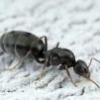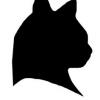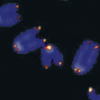Camponotus diversus
Camponotus diversus is a species of ant in the subfamily Formicinae. It inhabits forests and suburban environments across North America. This species is noted since it is the only documented species in which majors are actually a separate caste. Minor workers, who are usually four to fifteen mm long, care for the brood and queen (or queens, this species is also polygynous). They have fair eyesight, and forage mainly for carbohydrate food sources. They can be aggressive when attacked, yet usually prefer to let the majors handle fighting. Minors are also noted for their quick, erratic movement, similar to that of Anoplolepis gracilipes. Majors, on the other hand, are closer to Polyergus workers than Camponotus. Ranging from nine to forty-two mm in length, majors have massive heads, and oversized powerful mandibles. They actually have several surplus muscles which the minors do not possess, making them even more formidable foes. However, majors cannot take care of brood, and cannot feed or groom themselves. It is the minors' responsibility to make sure the majors are fed and groomed. Another distinguishing characteristic of majors is the fact that they have no social stomach. Yet they can spray formic acid, while minors cannot. The eyesight of majors is several times better than that of minors, exceeding that even of Myrmecia. This enables the majors to hunt down food and kill it. Once food is killed, the majors will drag it back to the nest, and will commence breaking it down, allowing minors to get inside and consume the insect's bodily fluids. The queen(s) always have at least one large major close by, and many smaller majors, and is tended to by dozens or hundreds of minors. Queens of this species are as well built and strong as the large majors, and can be thirty-four to thirty-six mm in length. Nuptial flights occur in mid to late April. Mature colonies, which can be hundreds of thousands of workers strong, only release five to ten queen alates, and thousands of male alates. This is due to the queens' solid, fortified build and exceptional maneuverability, which allows them to mate undisturbed, making the survival rate of queen alates close to seventy-five percent. This species also has the unique ability to sense which colonies are growing too large and could possibly pose a threat to their colony. This rarely includes native species, and usually includes invasive species such as from the genera Tetramorium, Solenopsis, Brachyponera, Linepithima, etc. Once a 'threat' has been determined, the colony will send out minor scouts who will swiftly rush in and attempt to take out foraging workers. Once the target is seized, the worker will rip it into several pieces on the spot. Next, majors and minors will begin holding up the colony's food processions and stealing food sources, which will stunt the threat's growth rate. This will continue for several weeks, and then the colony will gather thousands of minors and majors and raid the colony. These initial raids only penetrate a few inches into the nest. They are designed to steal brood and kill off some of the worker force. With each raid, the workers will plunge deeper and deeper, stealing more brood. The threat colony will be reduced to mere hundreds, and will only have a handful of brood left over. If the queen somehow manages to survive, they will be left alone and no longer be considered a threat. Of course if she is killed, the colony will also die.























